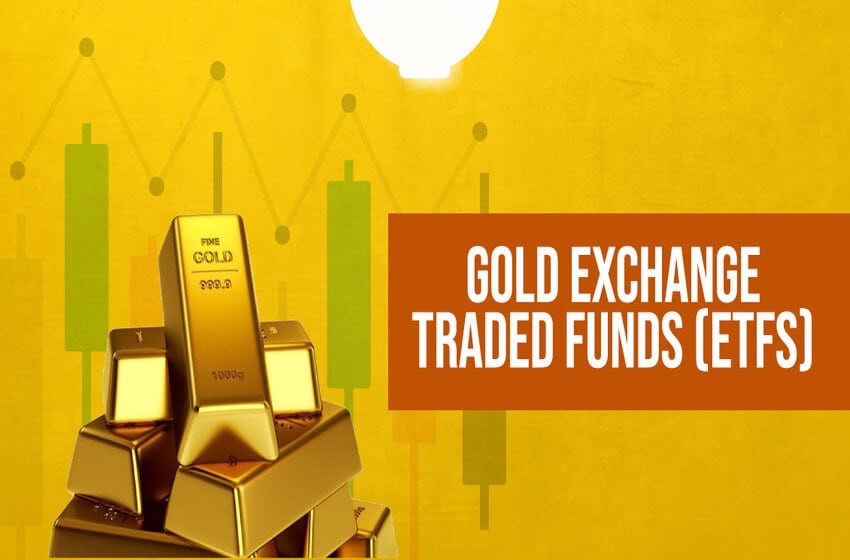
Important Things To Consider In The Gold ETF Investment
Gold ETFs are analogous to mutual funds that can be traded on the stock exchange. This implies that you can sell and buy units from the stock exchange. Similar to an equity mutual fund, where a pool of funds is accumulated from investors by an AMC (Asset Management Company) to invest in the shares, so is the scenario here, but Gold ETF investments are with pure gold as the underlying asset.
The asset management companies allot units to the investors which can then be traded on the exchange. The ETF price correlates with the underlying value of the physical gold, which adds more flexibility of equity investment to the primitive simple gold investments.
In basic terms, Gold ETF investment refers to buying gold but in electronic form.
How Does Gold ETF Investment Work?
Every unit of a Gold ETF implies one gram of gold which is 99.5% pure. These physical golds are kept in vaults of the custodian banks and act as the underlying asset from where the unit gets its value.
Let us understand this with an example: suppose the AMC chooses to allot the value of 1 gram of gold to each unit, in that scenario the valuation of each unit would roughly be the same as the price of 1 gram of gold. There are different investment funds that allow the consumers to trade in Gold ETFs. Some of them are Axis Gold ETF, Nippon India Gold ETF, Kotak Gold ETFs, etc.
Benefits Of Gold ETF Investments
Now that you know about Gold ETF investments, you may wonder about the benefits it carries with it. There are several benefits of investing in Gold ETFs. They are as follows:
- There is no price variation in Gold ETFs. They are bought and sold at the same rate which is not the scenario in physical gold ETFs.
- When you are dealing with Gold ETFs the purity is assured. You get 99.5% pure gold, whereas the physical market of gold lacks transparency to provide trust in the purity.
- With Gold ETFs, it is easy to sell them as they are listed on a recognized stock exchange. But that is not the case with physical gold.
- Gold ETF investments do not charge any entry or exit load as they are traded on a stock exchange.
- Physical gold includes indirect taxation, like GST at the rate of 3% on the sale and purchase value. But that is not the case with ETFs as they are excluded from GST.
Risks Of Gold ETF Investments
With every boon, there is a ban. So similarly Gold ETFs have risk involved as well. They are as follows:
- Gold as an option for investment has the characteristic to show exponential growth when the economy is unstable and falls when the economy is stable.
- Trading Gold ETFs on the stock exchange is restricted to five working days. This makes trading a bit difficult whereas physical gold is available throughout the year.
- There are various expense fees that are levied on ETF bonds to allow the smooth functioning of the funds.
- Gold has a sentimental value that ETFs fail to justify. This reduces its acceptance among the masses.
Ways To Invest In Gold ETFs
Primarily there are two ways in which you can invest in Gold ETFs, one is the direct way and the other is the indirect way. They are as follows:
- Direct Way: If you want to invest in Gold ETFs directly then you will require a Demat account through a stock broker. After that just like normal stocks are purchased, ETFs can also be purchased like that.
- Indirect Way: In case one fails to invest in Gold ETFs directly, via their Demat Account, there are other options as well like the HDFC Gold fund that allows investment in HDFC Gold ETFs.
Gold ETFs Vs Physical Gold: A Comparison
Comparing physical gold with Gold ETFs can not be justified completely as physical gold also serves the demand of jewelry along with investment options. The buying and selling rates of the physical gold are varied which is not the case with Gold ETFs. The comparison from the investment dimension offers the consideration point to indirect taxes like the GST, and variation in the selling and buying rate, and also liquidity and safety.
Conclusion
Investors who wish for a Gold ETF investment and are comfortable with the electronic option should evaluate the liquidity, risk, and the requirements of the investment period and also analyze the risks and benefits before making the decision for investment. The aim is to have a wider portfolio and to get the same through investing in gold can be a good option.

